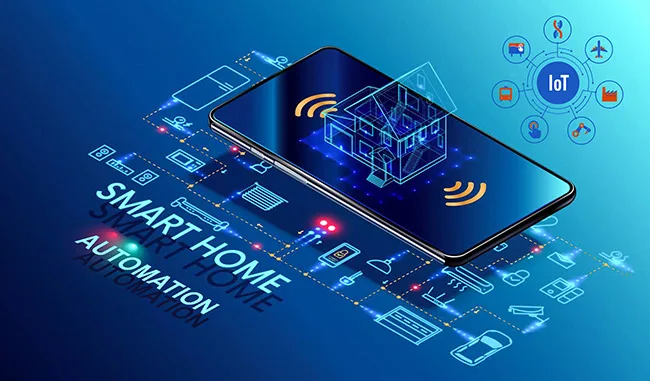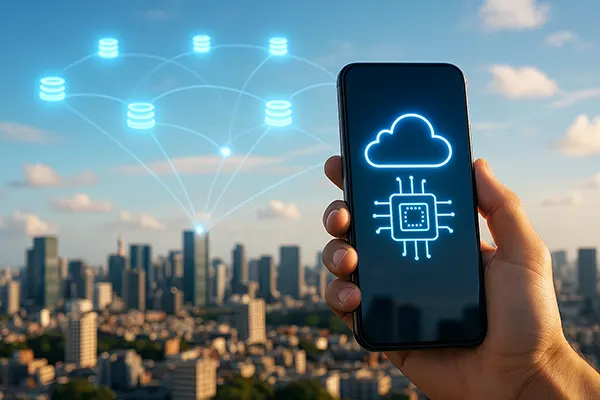
Smart Home Technology Review
Smart home technology, a revolutionary concept that has seamlessly integrated into our lives, offers a sophisticated way to manage and control home systems. This article explores its origins, functionality, connectivity, safety, applications, and effectiveness, providing a comprehensive overview of how smart home technology enhances modern living.
What is Smart Home Technology and When Did It Appear?
Smart home technology refers to a variety of devices and systems that automate and control various household functions. These technologies include smart thermostats, lighting systems, security cameras, and more, all interconnected through the Internet of Things (IoT). The concept of a smart home dates back to the late 20th century, with the introduction of early automation systems in the 1980s. However, it gained significant momentum in the 2000s with advancements in wireless communication, leading to the proliferation of smart devices we see today.
The initial phase of smart home technology was characterized by standalone devices with limited connectivity. Over time, the development of centralized hubs and improved communication protocols enabled seamless integration and control of various systems. By the mid-2010s, smart home technology had evolved into a mainstream solution, driven by major tech companies and increasing consumer demand for convenience and energy efficiency.
How Does It Work and How Effective Is It?
Smart home technology operates through interconnected devices that communicate via Wi-Fi, Bluetooth, Zigbee, or Z-Wave. These devices are often controlled through a central hub or a smartphone application, allowing users to manage their home environment remotely. For instance, a smart thermostat can adjust the temperature based on user preferences and occupancy patterns, enhancing comfort and reducing energy consumption.
The effectiveness of smart home technology lies in its ability to provide automated, responsive solutions to everyday tasks. By learning user behaviors and preferences, smart devices can optimize energy usage, enhance security, and improve overall convenience. Studies have shown that homes equipped with smart technology can achieve significant energy savings and offer enhanced security features, making them a worthwhile investment for many homeowners.
How to Connect All Equipment in the House to Control It on Your Phone
Connecting all smart devices in your home requires a central hub, which acts as the brain of your smart home system. Popular hubs include Amazon Echo, Google Nest Hub, and Samsung SmartThings. Once you have a hub, you can start adding devices such as smart lights, thermostats, locks, and cameras, ensuring they are compatible with your hub.
Most smart devices come with their own mobile applications, allowing for easy setup and control. By following the instructions provided with each device, you can connect them to your hub and synchronize them with the respective app. This setup enables centralized control, allowing you to manage all your devices from a single interface on your smartphone.
To ensure seamless operation, it is crucial to have a reliable home Wi-Fi network. Placing your hub centrally within your home can help maximize the signal strength and ensure all devices remain connected. Regular updates to both the hub and individual devices can further enhance performance and security.
How Safe Is It?
Safety is a primary concern when it comes to smart home technology. While these systems offer numerous benefits, they also introduce potential vulnerabilities. To mitigate risks, it is essential to follow best practices for securing your smart home network. This includes using strong, unique passwords for each device and enabling two-factor authentication whenever possible.
Additionally, keeping your devices and hub firmware up to date is crucial. Manufacturers regularly release updates to address security vulnerabilities and enhance functionality. Regularly updating your devices ensures they remain protected against emerging threats.
Another safety measure is to use a separate network for your smart devices. Creating a dedicated Wi-Fi network for your smart home system can help isolate these devices from your primary network, reducing the risk of unauthorized access.
Lastly, consider the physical security of your devices. For instance, placing security cameras in discreet locations and using secure mounting options can prevent tampering. Overall, a proactive approach to security can help you enjoy the benefits of smart home technology without compromising safety.

What Applications Are There in This Technology?
Smart home technology encompasses a wide range of applications, each designed to enhance different aspects of daily life. Some of the most popular applications include smart lighting, which allows for remote control and automation of lights to save energy and improve security.
Another common application is smart security systems, which include cameras, doorbells, and locks. These systems provide real-time alerts and remote access, enabling homeowners to monitor their property and respond to potential threats promptly.
Smart home technology also extends to home entertainment systems, such as smart TVs and speakers, which offer integrated control and access to various media sources. Additionally, smart appliances like refrigerators, ovens, and washing machines can be programmed to operate more efficiently, saving time and reducing utility costs.
How Effective Is It?
The effectiveness of smart home technology is evident in its ability to enhance convenience, security, and energy efficiency. By automating routine tasks, smart devices can save homeowners time and effort, allowing them to focus on more important activities. For example, a smart irrigation system can water your garden based on weather conditions, ensuring optimal plant health while conserving water.
In terms of security, smart home technology provides peace of mind through features like real-time monitoring and remote access. Homeowners can receive alerts and take immediate action if any unusual activity is detected, thereby preventing potential incidents.
Energy efficiency is another significant benefit. Smart thermostats, lighting, and appliances can adjust their operation based on user preferences and occupancy, leading to substantial reductions in energy consumption. This not only lowers utility bills but also contributes to environmental sustainability.



